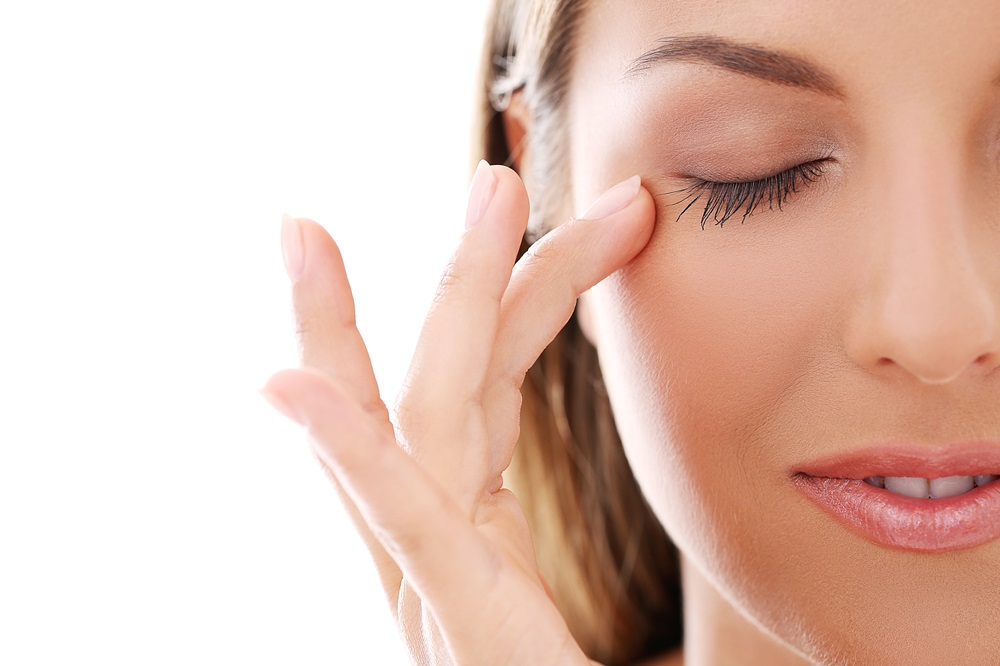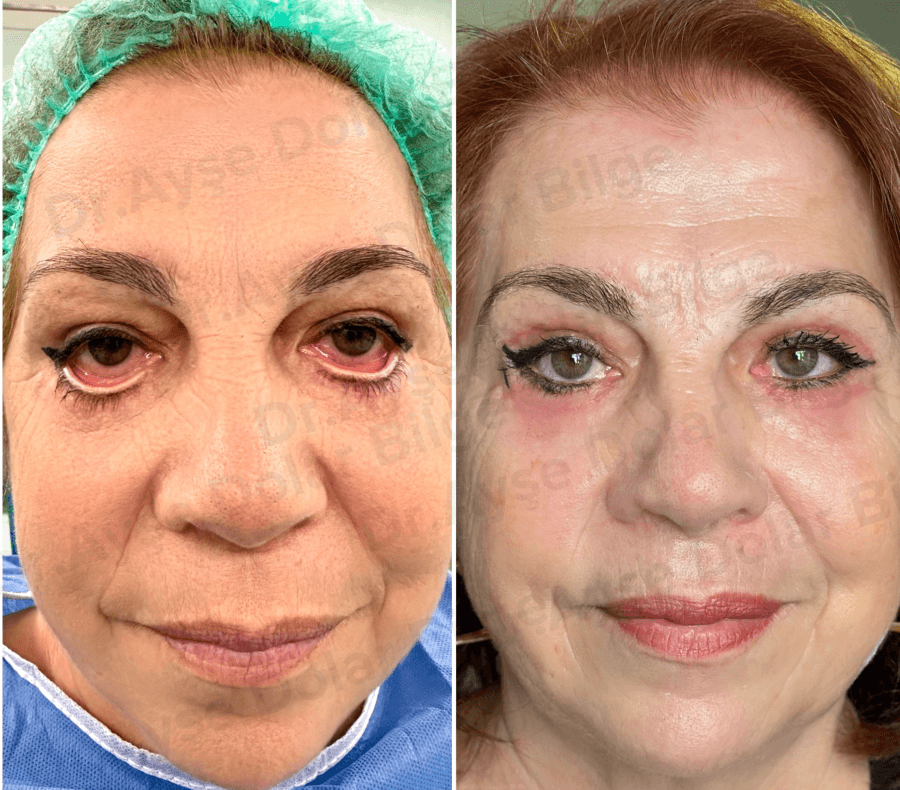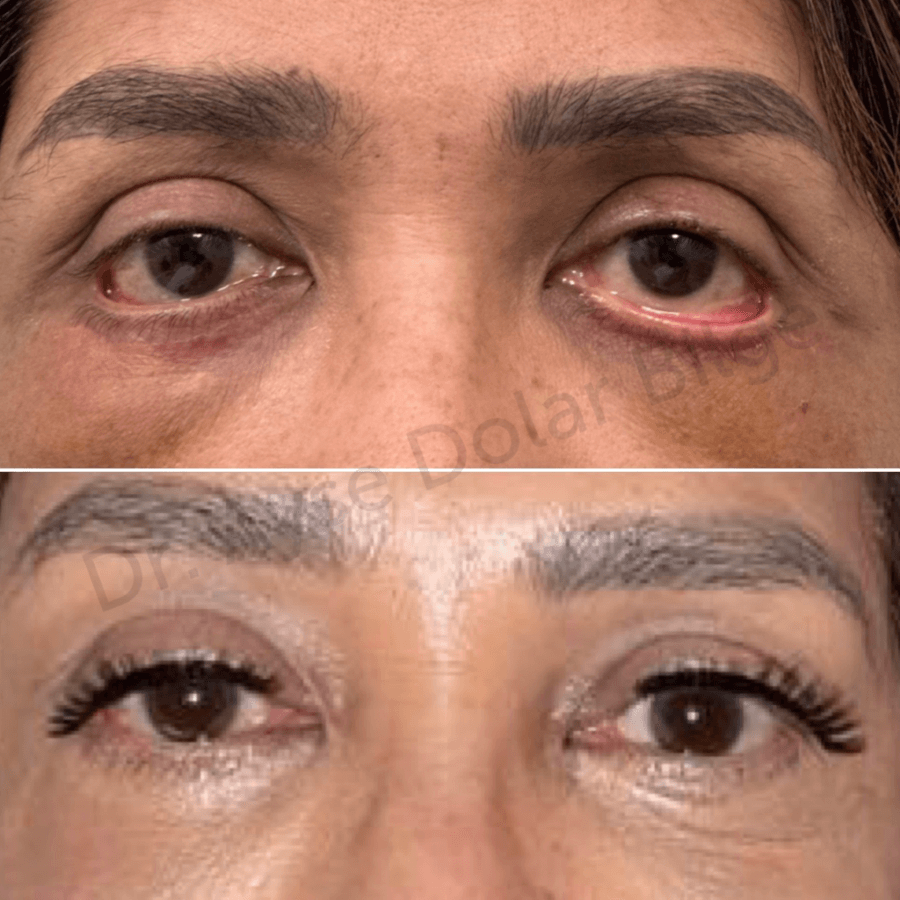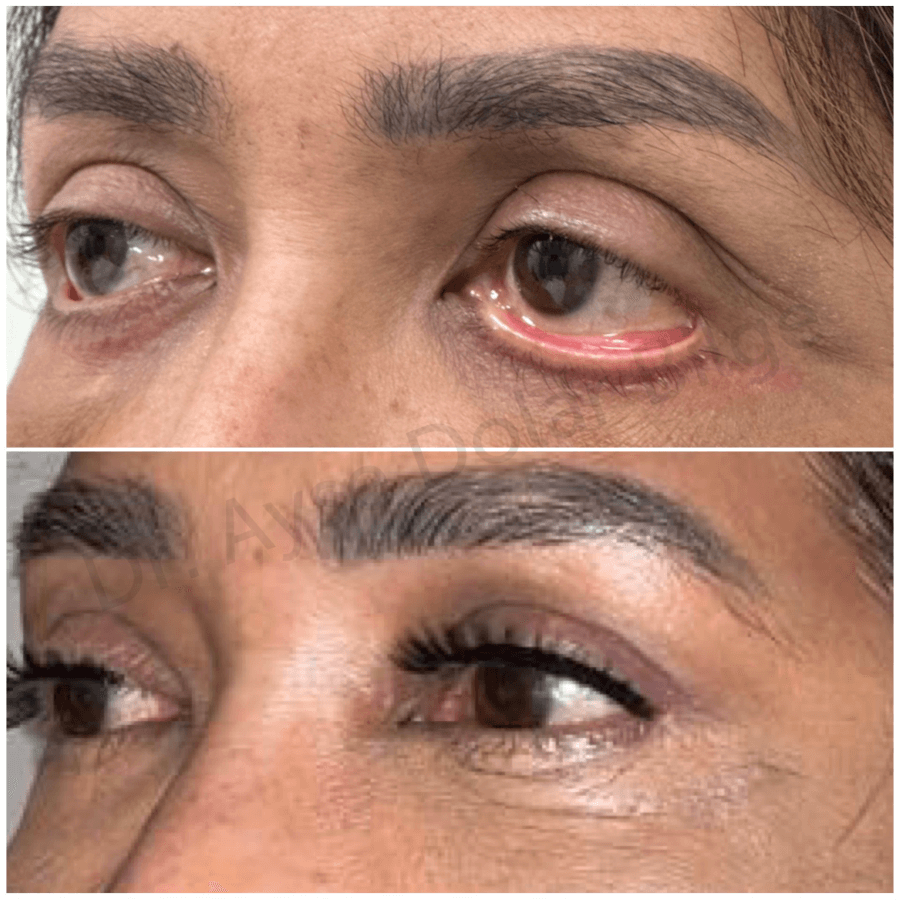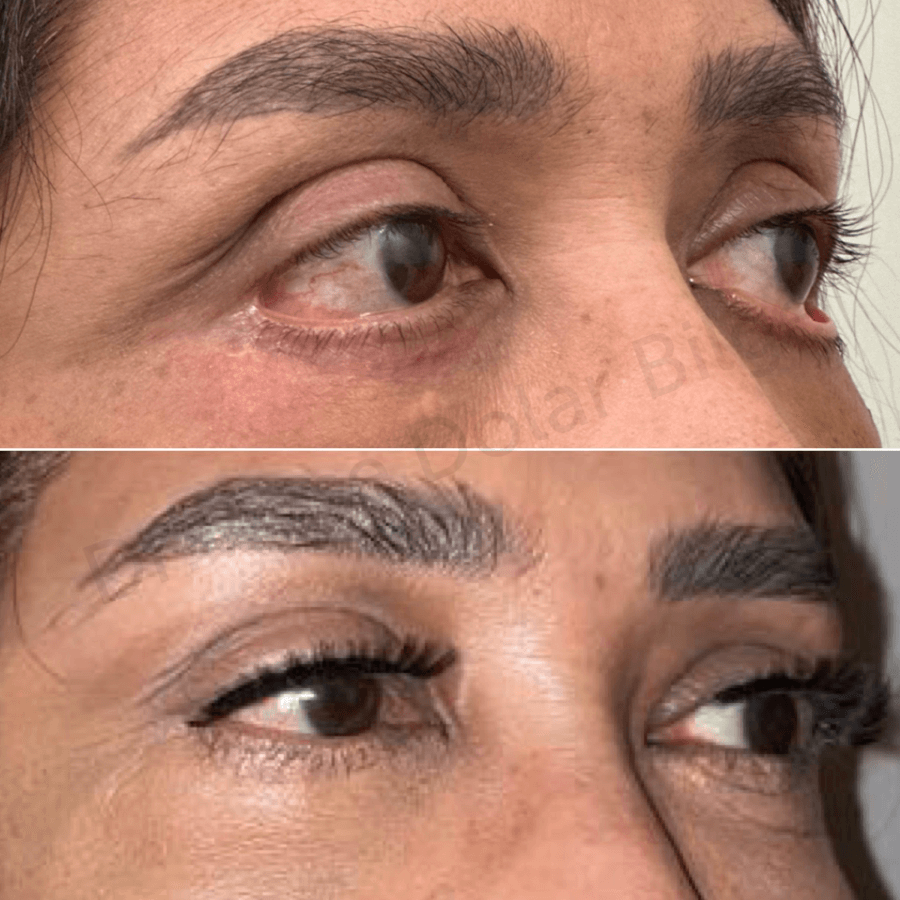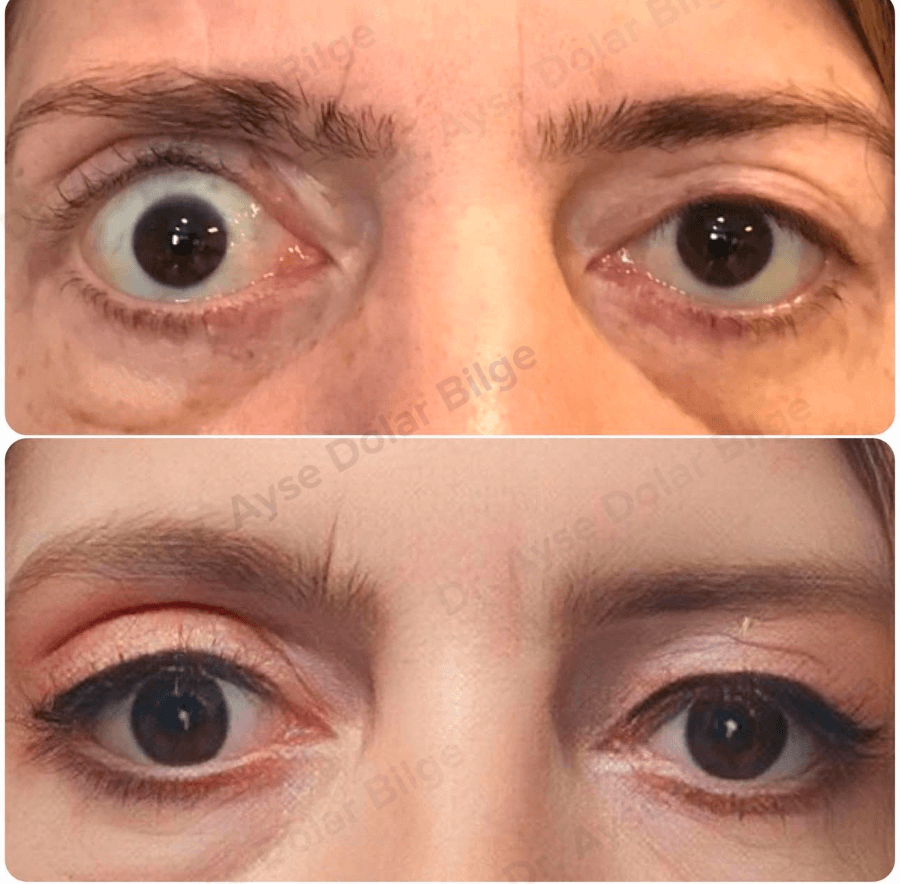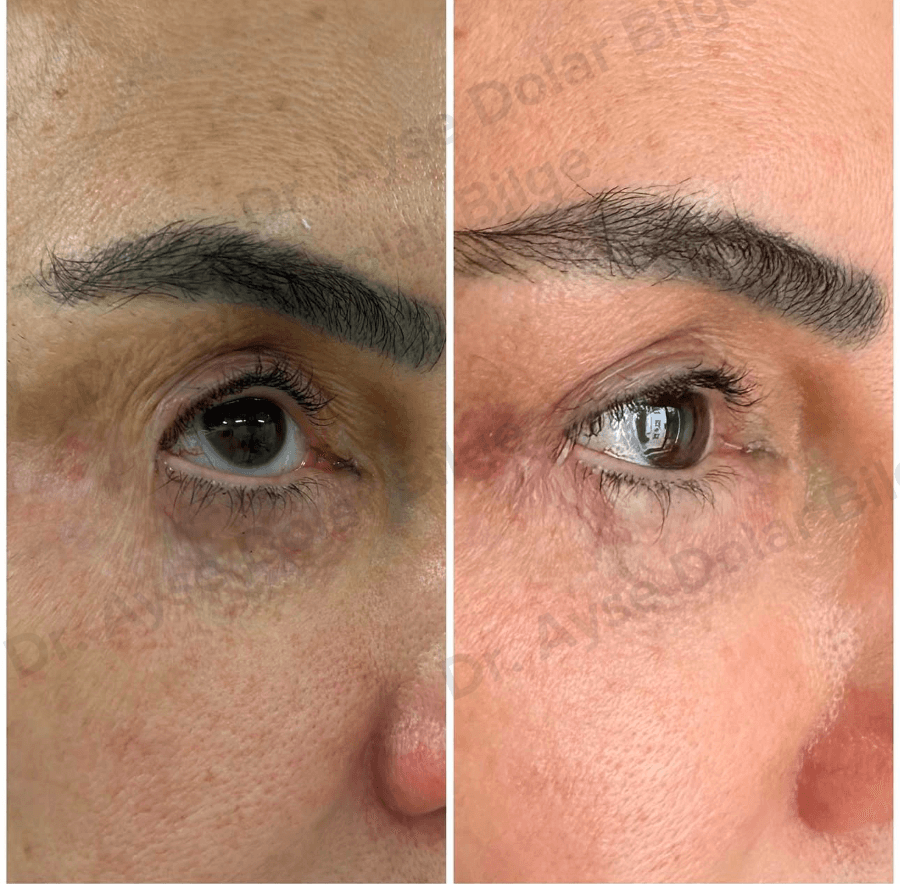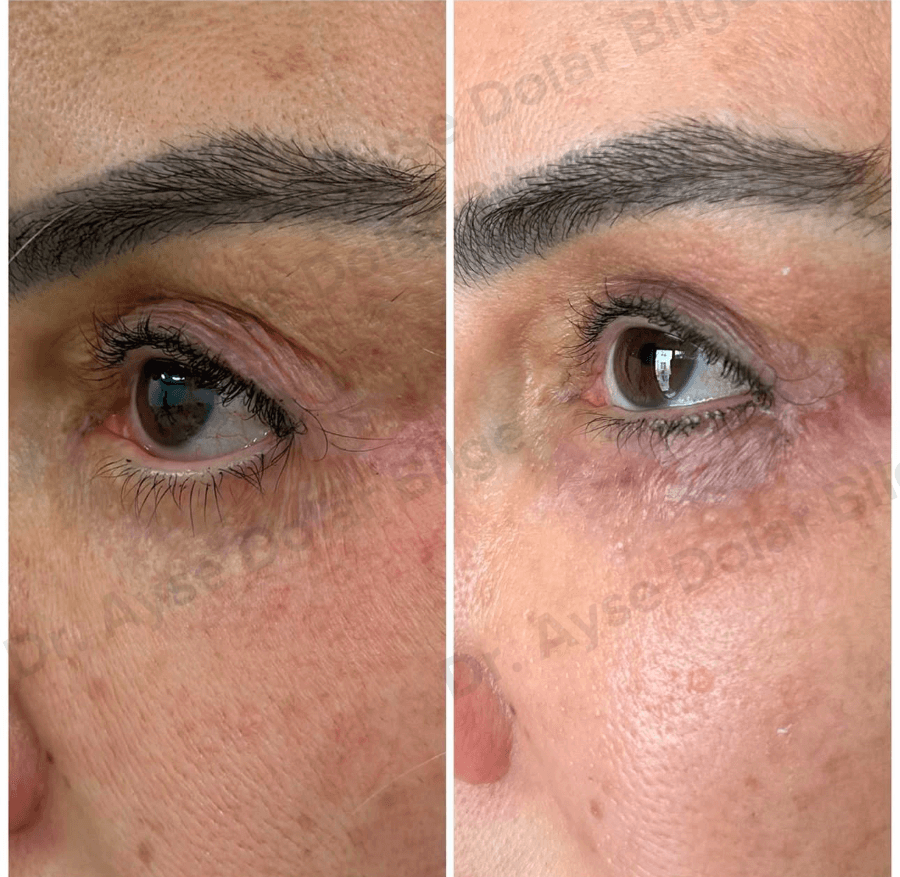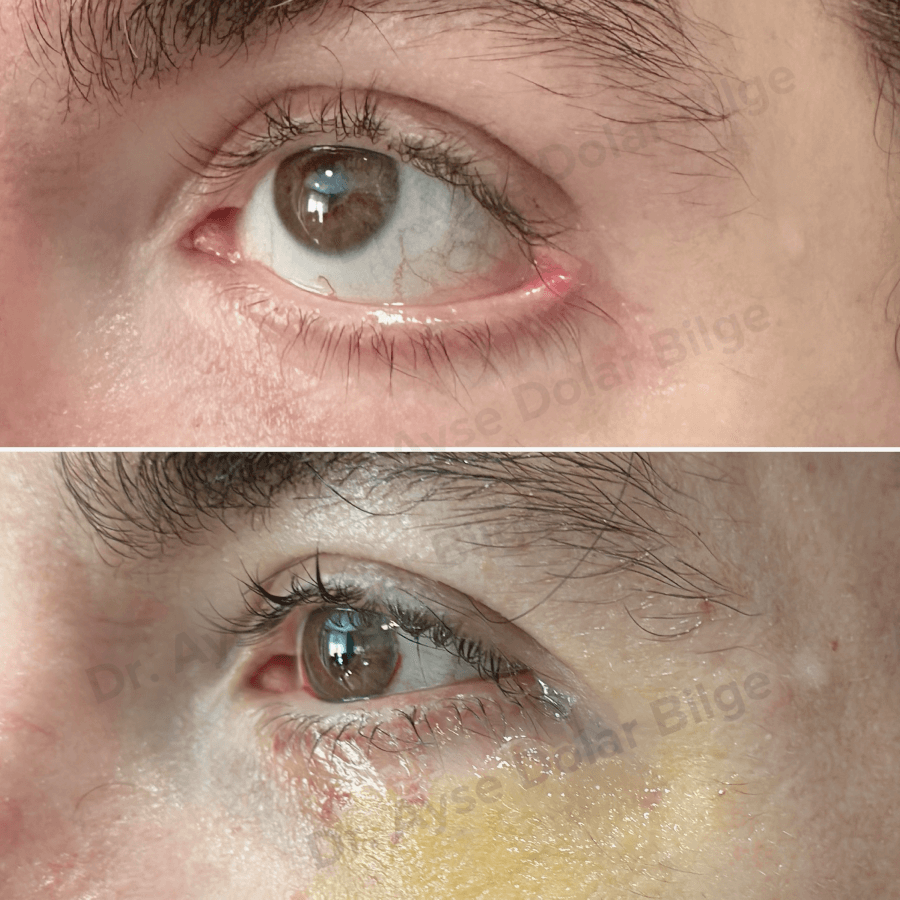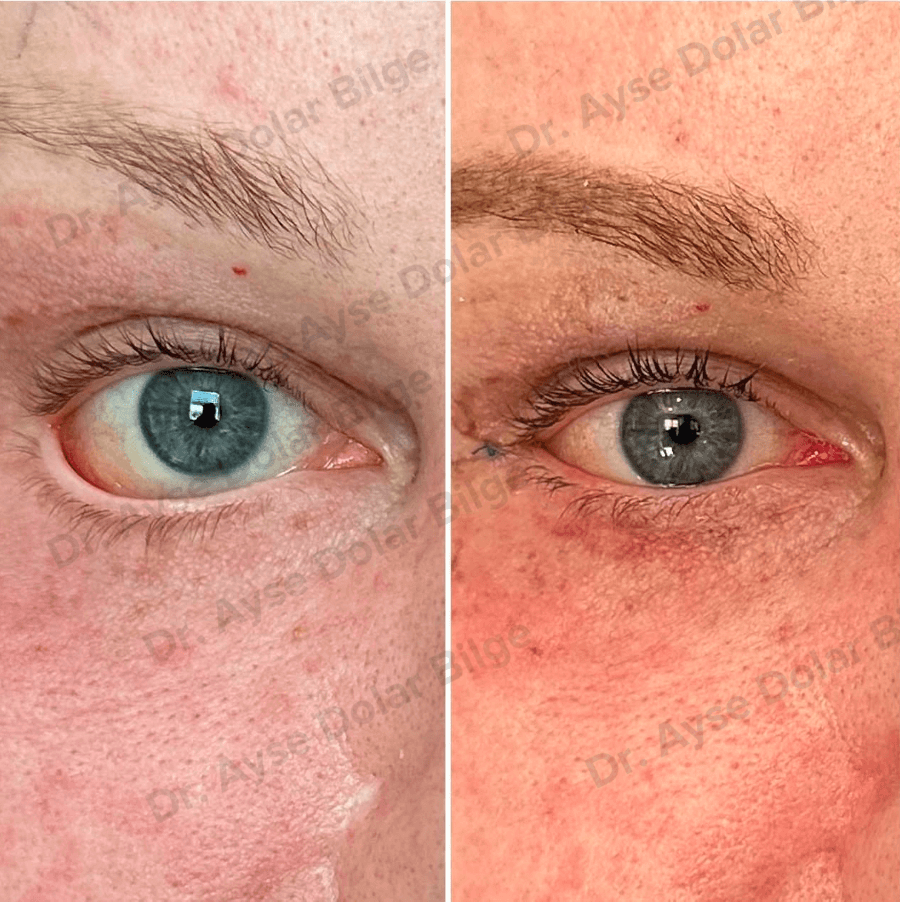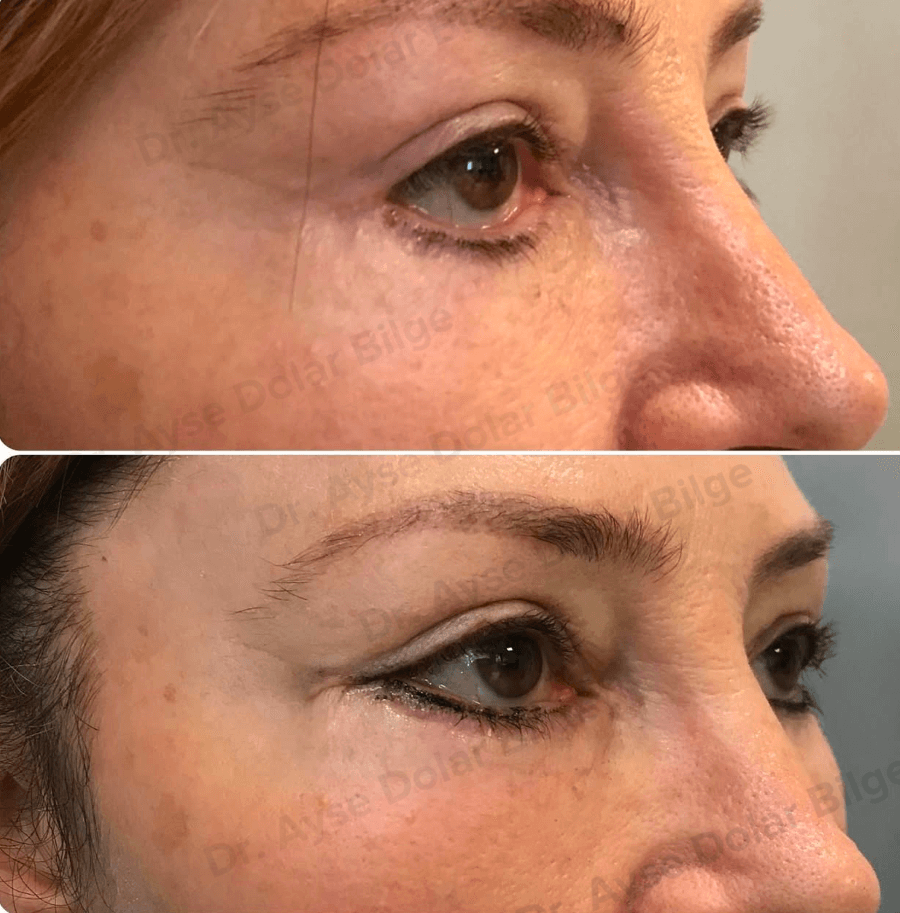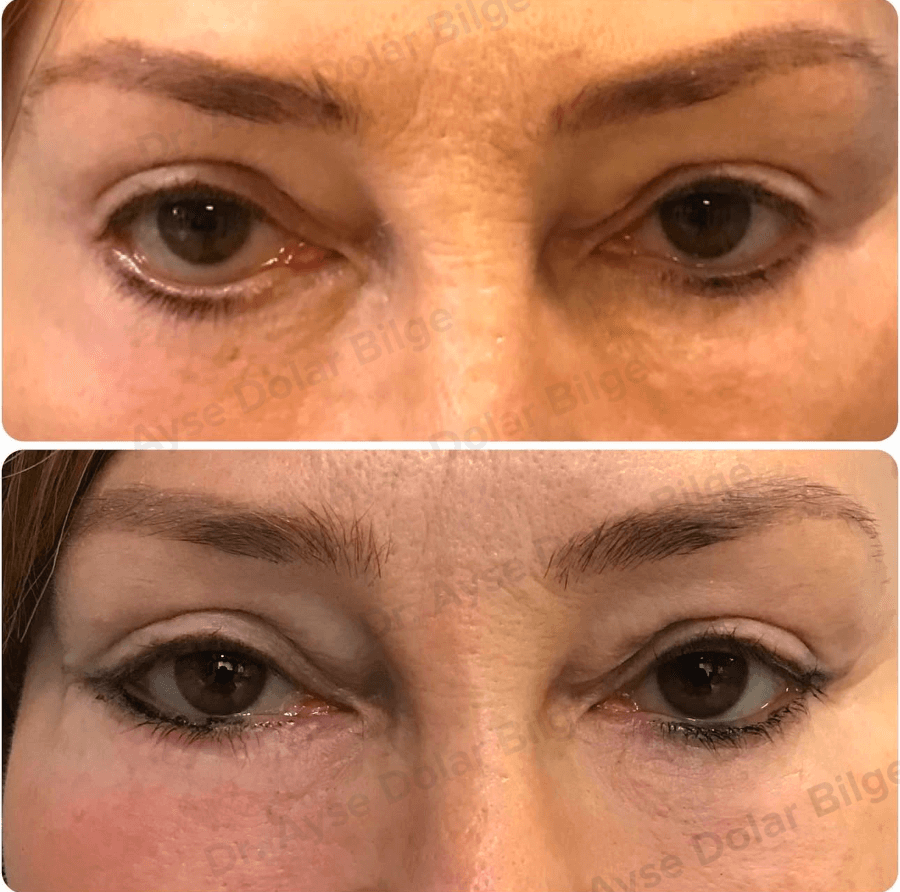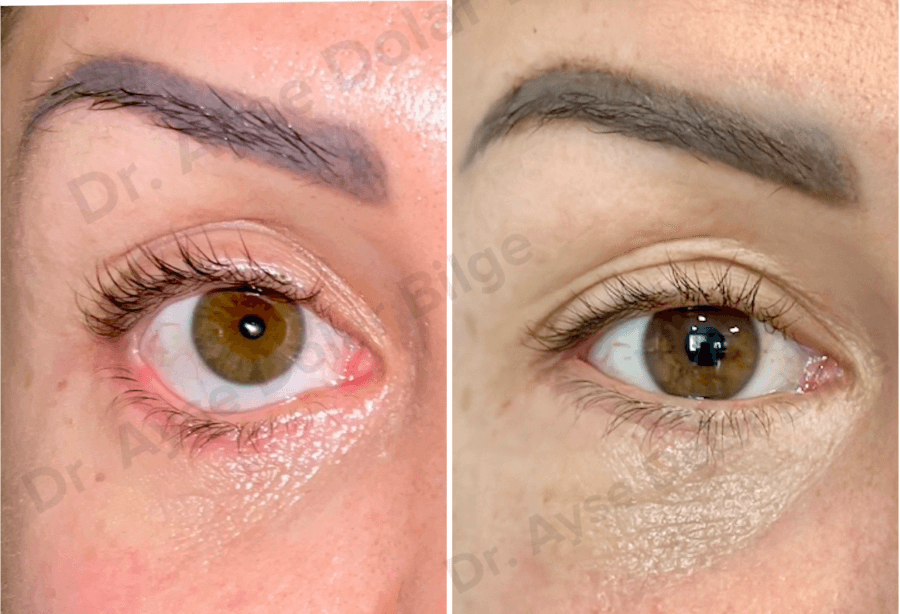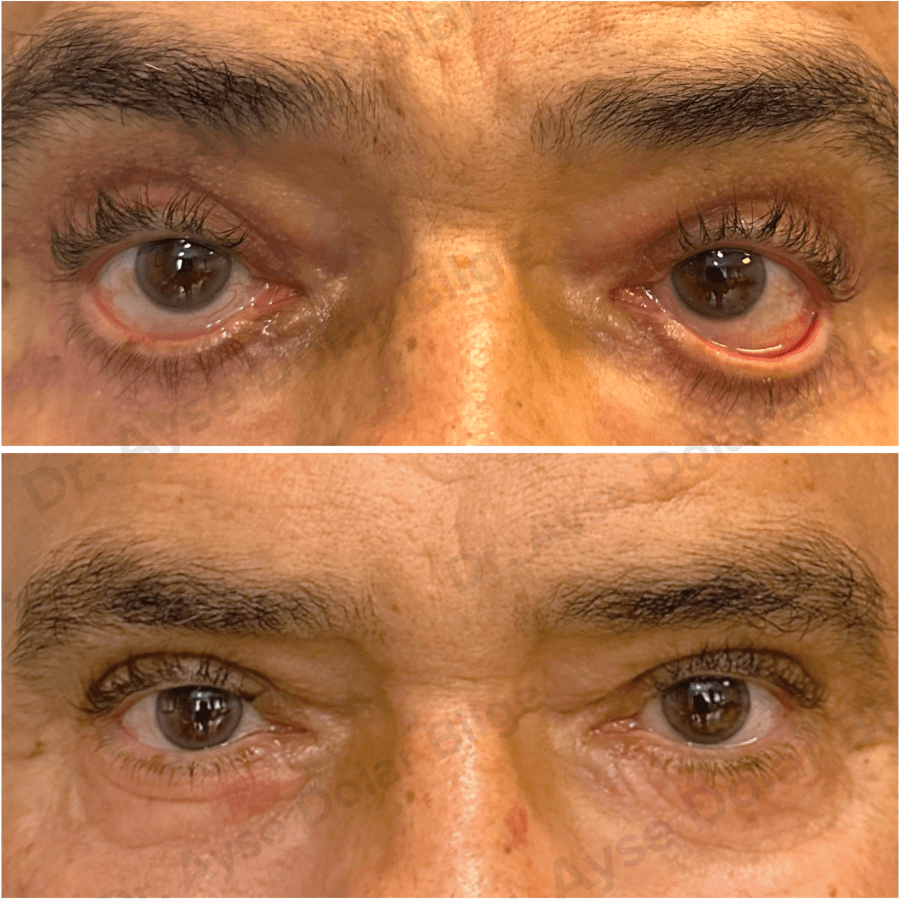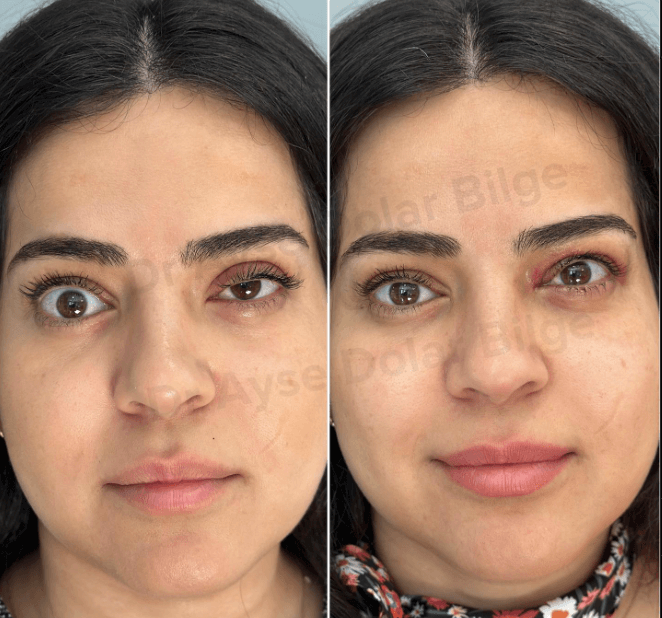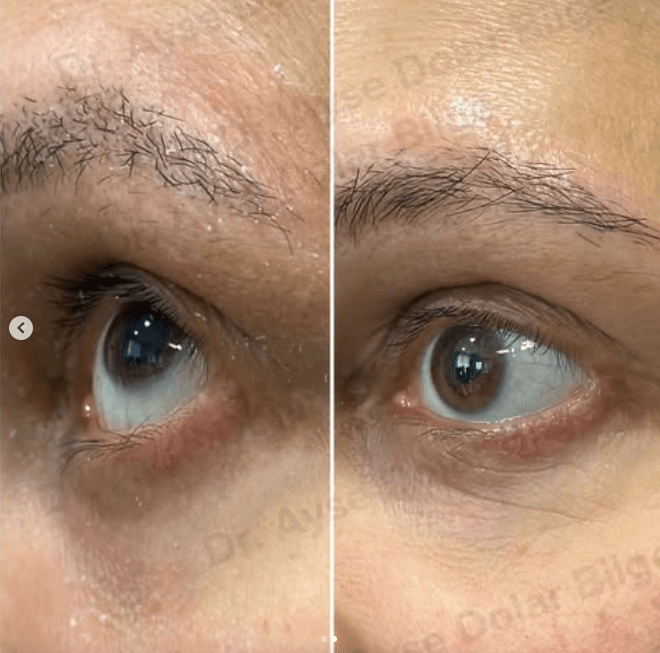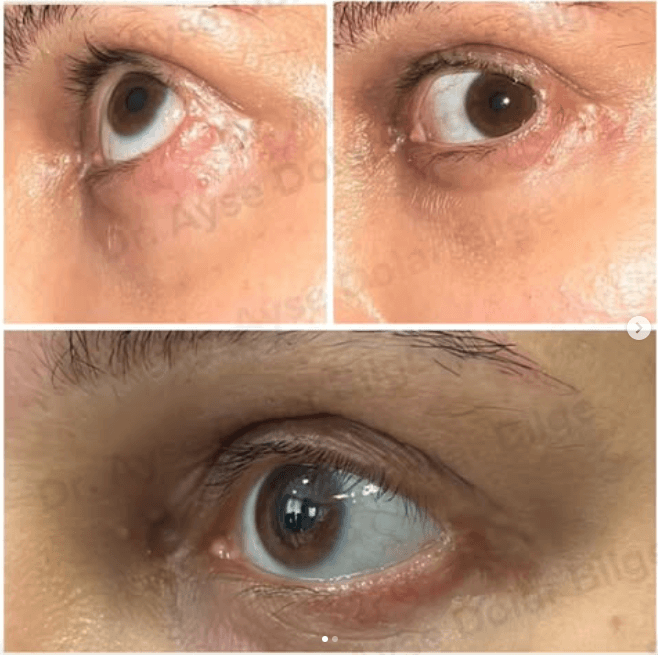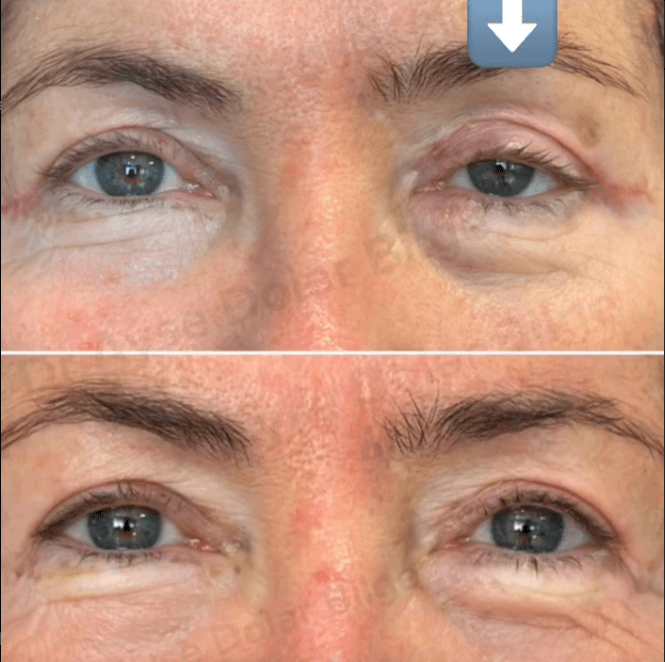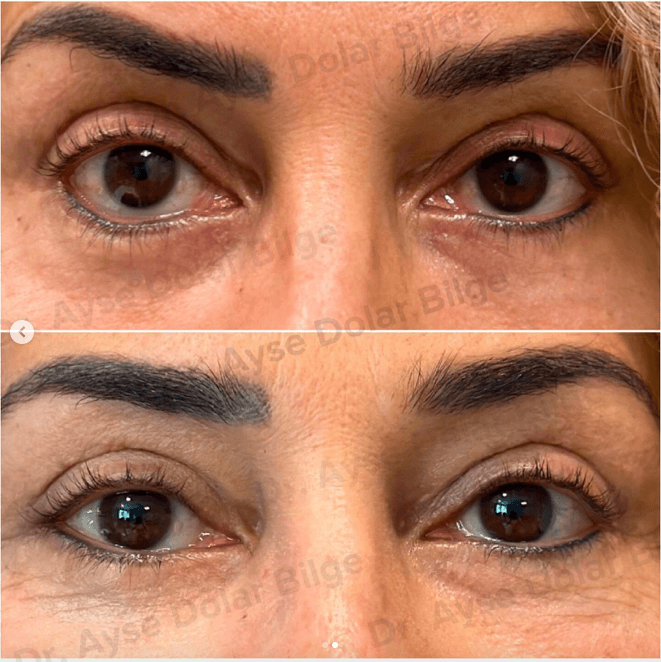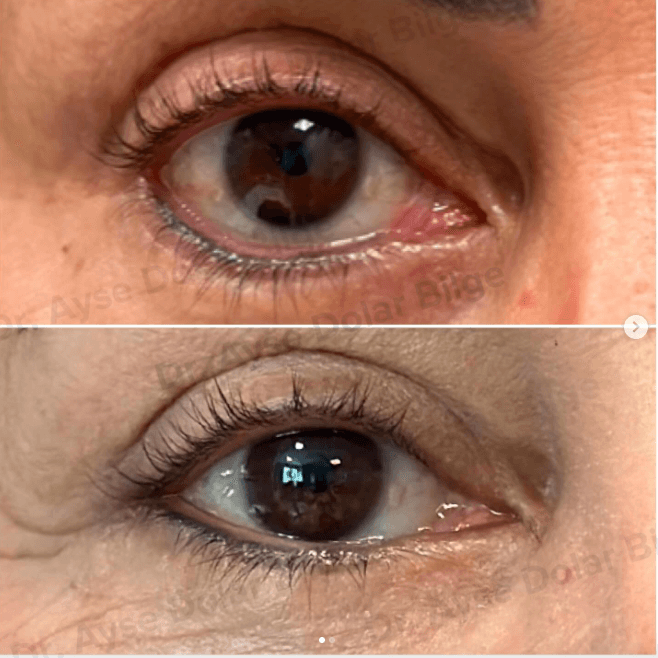Botched Eyelid Surgery
A botched eyelid surgery, also known as blepharoplasty gone wrong, can result in both cosmetic and functional complications. These include difficulty blinking, asymmetry, scarring, hollow eyes, and dry eyes. Problems may arise due to excessive tissue removal, poor surgical planning, or improper healing.
Common Signs
- Asymmetry between eyelids
- Inability to fully close the eyes
- Chronic dryness or tearing
- Sunken or hollow eye appearance
- Visible scarring or unnatural creases
Causes
- Over-resection of skin or fat
- Incorrect incision placement
- Inexperienced surgeon
- Poor post-operative care
General Solutions
- Revision Blepharoplasty: A corrective surgical procedure to fix aesthetic or functional issues.
- Fat Grafting or Fillers: Used to address volume loss, especially in hollow upper or lower lids.
- Canthoplasty or Canthopexy: To correct lid laxity or ectropion (outward turning of the lower lid).
- Laser Skin Resurfacing: Helps reduce scarring and improve skin texture.
Gone Wrong: Botched Upper Eyelid Surgery
Upper eyelid surgery (blepharoplasty) is designed to rejuvenate the eyes by removing excess skin and fat. However, when performed improperly or by an inexperienced surgeon, it can result in unwanted complications and unsatisfactory cosmetic outcomes. A botched upper eyelid surgery may cause both aesthetic and functional issues such as:
- Inability to fully close the eyes (lagophthalmos)
- Asymmetry or unnatural eyelid contour
- Excessive removal of skin or fat (hollow eyes)
- Scarring and tightness
- Chronic dry eyes or eye irritation
If you've experienced any of these complications, you're not alone. Revision eyelid surgery can help restore function and achieve a more natural appearance. Our clinic specializes in correcting failed blepharoplasties with advanced microsurgical techniques, personalized planning, and meticulous aesthetic evaluation.
Don't live with the results of a botched eyelid surgery — let us help you regain comfort and confidence.
Botched Upper Eyelid Surgery
Upper eyelid surgery may go wrong if too much skin, fat, or muscle is removed. This can lead to a hollow-eyed look, lagophthalmos (inability to close the eyes), and even exposure keratopathy (damage to the eye due to dryness).
Specific Complications
- Sunken upper eyelids
- Drooping of the brows (pseudo-ptosis)
- Over-correction resulting in dry eyes
- Incomplete blinking
Treatment Options
- Upper Eyelid Reconstruction: Often involves skin grafting or local flaps to restore eyelid function.
- Fat Grafting: Fills in hollows and softens the appearance.
- Ptosis Repair: If the levator muscle was damaged or overcorrected.
- Lubricating Eye Drops & Tarsorrhaphy: Temporary measures for dry eye relief and corneal protection.
Expert Advice
"Don’t rush into revision surgery. Wait at least 6 months unless there’s a medical emergency like corneal exposure." – Oculoplastic Surgeon Dr. L. Adams
Botched Lower Eyelid Surgery
Lower eyelid issues often include ectropion, retraction, and round-eye appearance. These arise mostly from aggressive skin removal or poor support to the lower eyelid.
Symptoms to Watch For
- Whites of the eyes overly exposed (scleral show)
- Eyelid pulled downward
- Excessive tearing or eye irritation
- “Sad” or unnatural eye shape
Treatment Options
- Midface Lift: Repositions the cheek fat pad and supports the lower lid.
- Spacer Grafts: Cartilage or synthetic materials used to restore lid position.
- Canthopexy/Canthoplasty: Reinforces the outer corner of the eyelid.
- Skin Grafting: For volume or length deficit from over-excision.
Preventive Tip
Always choose a board-certified oculoplastic surgeon with before/after portfolio in lower eyelid revisions.
Final Suggestions for Patients
- Request a detailed pre-operative eyelid evaluation, including photos and symmetry checks.
- Ask about your surgeon’s revision experience and complication management rate.
- Use cold compresses and prescribed eye lubricants diligently after surgery to reduce inflammation and dryness.
- Be patient – swelling can obscure final results for up to 3–6 months.
- Seek a second opinion early if something feels wrong after the first 2–4 weeks post-op.
Contact Dr. Ayşe Dolar Bilge to schedule a personalized online consultation!
Clinic Location: Istanbul/Turkey
